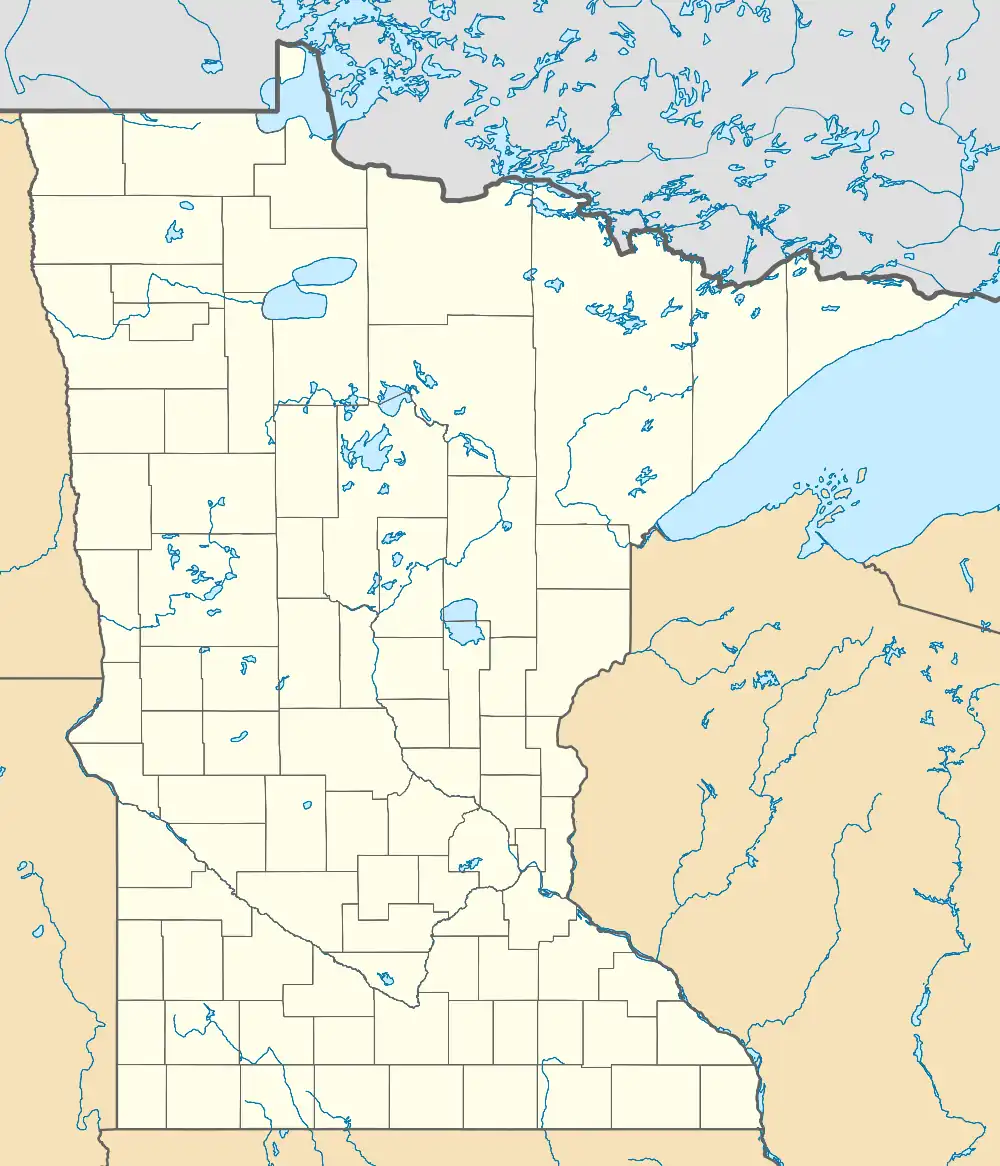Minnesota Bureau of Criminal Apprehension
The Minnesota Bureau of Criminal Apprehension (BCA) is a statewide criminal investigative bureau under the Minnesota Department of Public Safety that provides expert forensic science and criminal investigation services throughout the state of Minnesota. The BCA assists local, state, tribal, and federal agencies in major criminal investigations. It is headquartered in St. Paul. The BCA's current superintendent is Drew Evans.[1]
| Minnesota Bureau of Criminal Apprehension | |
|---|---|
| Abbreviation | BCA |
| Agency overview | |
| Formed | 1927 |
| Employees | 300 |
| Jurisdictional structure | |
| Operations jurisdiction | Minnesota, U.S. |
 | |
| Map of Minnesota Bureau of Criminal Apprehension's jurisdiction | |
| Size | 86,936 square miles (225,160 km2) |
| Population | 5,576,606 (2017 est.) |
| Legal jurisdiction | State of Minnesota |
| Operational structure | |
| Headquarters | 1430 Maryland Avenue E St. Paul, MN 55106 |
| Agency executive |
|
| Parent agency | Minnesota Department of Public Safety |
| Child agencies |
|
| Website | |
| dps | |
History
The Bureau of Criminal Apprehension (BCA) was created by the Minnesota Legislature in 1927 in order to assist police departments statewide to solve crimes and apprehend criminals, under the direction of the Minnesota Attorney General's office. The BCA gathers crime statistics to assist state and local agencies to identify criminal trends. In 1935, agents received full police power and were licensed police officers throughout the state. In 1947, the BCA Crime Lab was established in St. Paul to assist in solving of crimes via forensic science, and was one of the first DNA laboratories in the United States in 1990.[2] Later the BCA was the first law enforcement agency in the United States to identify a suspect solely on DNA. In 1969, the agency was moved under direction of the State Attorney General's Office to the Minnesota Department of Public Safety. In 2001, the BCA opened an additional forensic laboratory in Bemidji. In 2004, the Bureau became one of four laboratories in the United States selected by the Federal Bureau of Investigation to serve as a regional mitochondrial DNA laboratory.
Divisions
- Forensic Science Division provides forensic science expertise to law enforcement agencies statewide and to the FBI. This includes crime scene processing, digital and multimedia evidence collection, DNA collection and processing, forensic firearm examination, fingerprint identification, Toxicology, Trace evidence, breath alcohol instrument calibration, and chemical testing.
- Investigative Division provides criminal investigative assistance to law enforcement agencies statewide. BCA agents and analysts are positioned in two regional offices in St. Paul and Bemidji, along with 11 field offices located in Alexandria, Brainerd, Duluth, Grand Rapids, Mankato, Marshall, Moorhead, Rochester, Roseau, St. Cloud and Willmar. Services include crime scene investigations, cold case assistance, human trafficking investigations, predatory offender investigations, use-of-force and conflict investigations,[3] and special operations.
- Minnesota Justice Information Services (MNJIS), manages information between sources of criminal justice data for law enforcement agencies and criminal investigation agencies to help solve crimes via statistics and analysis.
- Administrative Services provides training to law enforcement and investigation agencies to assist in crime scene investigation and investigation of crimes. In addition, assists in missing persons and the State's Amber alert system.[4]
See also
References
- "Building Trust: A Conversation with Drew Evans". Minneapolis Foundation. Retrieved 2022-09-12.
- "'An incredibly powerful tool,' DNA database, turns 30". MPR News. Retrieved 2022-09-12.
- Tribune, Rochelle Olson Star. "Under fresh scrutiny, BCA's Force Investigations Unit hits one-year mark soon with plenty of work on police shootings". Star Tribune. Retrieved 2022-09-12.
- "Home". AMBER Alert. Retrieved 2022-09-12.